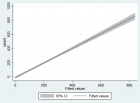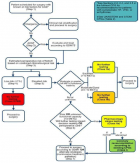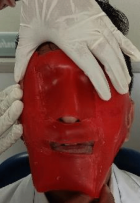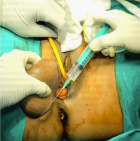Abstract
Research Article
Comparison of Lung Function of normal and persons with chronic low back pain and its relation with duration and severity of Chronic Low Back Pain
Amit Baruaa, Monalisa Pattnaik and Patitapaban Mohanty*
Published: 13 October, 2017 | Volume 1 - Issue 3 | Pages: 137-143
Introduction: Chronic low back pain is one of the most prevalent musculoskeletal disorders. Studies have shown certain relations between physical fitness and chronic low back pain (CLBP) by examine some measures of physical fitness. The aim of study was to measure lung function using winspiro PRO in patient with CLBP versus normal healthy individual, and relation of lung function with duration and intensity of CLBP.
Methodology: The study population is comprised of a total of 120 adult persons. 60 subjects with chronic low back pain (41 male and 19 female) with a mean age of 30.69 years (+4.34) and 60 normal individual (39 male and 21 female) with mean age of 29.00 years (+5.34).
Results:The result of comparison of the respiratory parameter forced vital capacity (FVC), and maximal voluntary ventilation (MVV) of individual with CLBP show a significant difference as compare to the normal healthy population. In unrelated ‘t’ test the patient with CLBP (N=60) of age 30.51(SD±4.33), height 169cm (SD±1.23), weight 57.86(SD±7.73) and body mass index (BMI) 20.46 (SD±2.54) show a significant difference in respiratory parameter FVC ( t=17.244, P=0.000), and MVV ( t=11.048, P=0.000) as compare to the normal healthy persons (N=60) of age 29.79 (SD±5.28), height 170cm (SD±1.13), weight 59.40(SD±6.97) and BMI 21.59 (SD±3.29).In patient group- FVC range is 34.0% to 75.00% (52.85%±9.30). MVV range is 45.0% to 86.80%. (63.11%±12.06)In control group FVC range is 63.90% to 98.83% (83.63%±7.59). MVV range is 63.00% to 98.00% (78.96%±7.86).
Conclusions:The overall result of the study show that there is a significant difference in the respiratory parameter that is FVC (forced vital capacity), and the MVV (maximum voluntary ventilation) in persons with chronic low back pain as compare to the healthy person of same age, height, weight and body mass index (BMI).
Read Full Article HTML DOI: 10.29328/journal.jnpr.1001015 Cite this Article Read Full Article PDF
Keywords:
Chronic low back pain; Duration of pain; Severity of pain; Lung function
References
- Krismer M, van Tulder M. Low Back Pain Group of the Bone and Joint Health Strategies for Europe Project (2007) Strategies for prevention and management of musculoskeletal conditions. Low back pain (non-specific). Best Pract Res Clin Rheumatol. 2007; 21: 77-91.
- Hodges PW, Gandevia SC. Activation of the human diaphragm during a repetitive postural task. J Physiol. 2000; 522: 165-175. Ref.: https://goo.gl/ihZZm7
- Courtney R. The functions of breathing and its dysfunctions and their relationship to breathing therapy. International Journal Osteopathic Medicine. 2009; 12: 78-85. Ref.: https://goo.gl/BGiQWS
- McGill SM, Grenier S, Bluhm M, Richard P, Susan B, et al. Previous history of LBP with work loss is related to lingering effects in biomechanical physiological, personal, and psychosocial characteristics. Ergonomics. 2003; 46: 731-746. Ref.: https://goo.gl/ZmfCeV
- Sapsford RR, Richardson CA, Maher CF, Hodges PW. Pelvic floor muscle activity in different sitting postures in continent and incontinent women. Arch Phys Med Rehabil. 2008; 89: 1741-1747. Ref.: https://goo.gl/1Tv7Vn
- Murrin KR, Rosen M. Pain measurement. In: Smith G and Govindo BG (editors) Acute pain: London: Butterworth. 1985.
- Kremer E, Atkinson JH, Ignelzi RJ. Measurement of pain: patient preference does not confound pain measurement. Pain. 1981; 10: 241-248. Ref.: https://goo.gl/gUdj6k
- Revill SI, Robinson JO, Rosen M, Hogg MI. The reliability of a linear analogue for evaluating pain. Anaesthesia. 1976; 31: 1191-1198. Ref.: https://goo.gl/mcBhvN
- Vianin M. Psychometric properties and clinical usefulness of the Oswestry Disability Index. J Chiropr Med. 2008; 7: 161-163. Ref.: https://goo.gl/wUa5cZ
- Hussain SN, Rabinovitch B, Macklem PT, Pardy RL. Effects of separate rib cage and abdominal restriction on exercise performance in normal humans. J Appl Physiol. 1985; 58: 2020-2026. Ref.: https://goo.gl/spW8KB
- Gonzalez J, Coast RJ, Lawler JM, Welch HG. A Chest Wall Restrictor to Study Effects on pulmonary Function and Exercise: 2. The Energetics of Restrictive Breathing. Respiration. 1999; 66: 188-194. Ref.: https://goo.gl/QgFrPb
- Frank C, Kobesova A, Kolar P. Dynamic neuromuscular stabilization & sports rehabilitation. Int J Sports Phys Ther. 2013; 8: 62-73. Ref.: https://goo.gl/5wkKSJ
- Neder JA, Andreoni S, Lerario MC, Nery LE. Reference values for lung function tests. II. Maximal respiratory pressures and voluntary ventilation. Braz J Med Biol Res. 1999; 32: 719-727. Ref.: https://goo.gl/Hq9PJe
Figures:
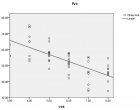
Figure 1
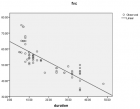
Figure 2
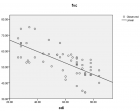
Figure 3
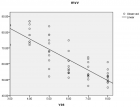
Figure 4
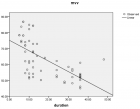
Figure 5
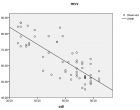
Figure 6
Similar Articles
-
Comparison of Lung Function of normal and persons with chronic low back pain and its relation with duration and severity of Chronic Low Back PainAmit Baruaa,Monalisa Pattnaik,Patitapaban Mohanty*. Comparison of Lung Function of normal and persons with chronic low back pain and its relation with duration and severity of Chronic Low Back Pain. . 2017 doi: 10.29328/journal.jnpr.1001015; 1: 137-143
Recently Viewed
-
Assessment and treatment of patients with kinesiophobia: A Delphi consensusMattias Santi*,Ina Diener,Rob Oostendorp. Assessment and treatment of patients with kinesiophobia: A Delphi consensus. J Nov Physiother Rehabil. 2022: doi: 10.29328/journal.jnpr.1001047; 6: 023-028
-
Sinonasal Myxoma Extending into the Orbit in a 4-Year Old: A Case PresentationJulian A Purrinos*, Ramzi Younis. Sinonasal Myxoma Extending into the Orbit in a 4-Year Old: A Case Presentation. Arch Case Rep. 2024: doi: 10.29328/journal.acr.1001099; 8: 075-077
-
Timing of cardiac surgery and other intervention among children with congenital heart disease: A review articleChinawa JM*,Adiele KD,Ujunwa FA,Onukwuli VO,Arodiwe I,Chinawa AT,Obidike EO,Chukwu BF. Timing of cardiac surgery and other intervention among children with congenital heart disease: A review article. J Cardiol Cardiovasc Med. 2019: doi: 10.29328/journal.jccm.1001047; 4: 094-099
-
Advancing Forensic Approaches to Human Trafficking: The Role of Dental IdentificationAiswarya GR*. Advancing Forensic Approaches to Human Trafficking: The Role of Dental Identification. J Forensic Sci Res. 2025: doi: 10.29328/journal.jfsr.1001076; 9: 025-028
-
Scientific Analysis of Eucharistic Miracles: Importance of a Standardization in EvaluationKelly Kearse*,Frank Ligaj. Scientific Analysis of Eucharistic Miracles: Importance of a Standardization in Evaluation. J Forensic Sci Res. 2024: doi: 10.29328/journal.jfsr.1001068; 8: 078-088
Most Viewed
-
Evaluation of Biostimulants Based on Recovered Protein Hydrolysates from Animal By-products as Plant Growth EnhancersH Pérez-Aguilar*, M Lacruz-Asaro, F Arán-Ais. Evaluation of Biostimulants Based on Recovered Protein Hydrolysates from Animal By-products as Plant Growth Enhancers. J Plant Sci Phytopathol. 2023 doi: 10.29328/journal.jpsp.1001104; 7: 042-047
-
Sinonasal Myxoma Extending into the Orbit in a 4-Year Old: A Case PresentationJulian A Purrinos*, Ramzi Younis. Sinonasal Myxoma Extending into the Orbit in a 4-Year Old: A Case Presentation. Arch Case Rep. 2024 doi: 10.29328/journal.acr.1001099; 8: 075-077
-
Feasibility study of magnetic sensing for detecting single-neuron action potentialsDenis Tonini,Kai Wu,Renata Saha,Jian-Ping Wang*. Feasibility study of magnetic sensing for detecting single-neuron action potentials. Ann Biomed Sci Eng. 2022 doi: 10.29328/journal.abse.1001018; 6: 019-029
-
Pediatric Dysgerminoma: Unveiling a Rare Ovarian TumorFaten Limaiem*, Khalil Saffar, Ahmed Halouani. Pediatric Dysgerminoma: Unveiling a Rare Ovarian Tumor. Arch Case Rep. 2024 doi: 10.29328/journal.acr.1001087; 8: 010-013
-
Physical activity can change the physiological and psychological circumstances during COVID-19 pandemic: A narrative reviewKhashayar Maroufi*. Physical activity can change the physiological and psychological circumstances during COVID-19 pandemic: A narrative review. J Sports Med Ther. 2021 doi: 10.29328/journal.jsmt.1001051; 6: 001-007

HSPI: We're glad you're here. Please click "create a new Query" if you are a new visitor to our website and need further information from us.
If you are already a member of our network and need to keep track of any developments regarding a question you have already submitted, click "take me to my Query."









